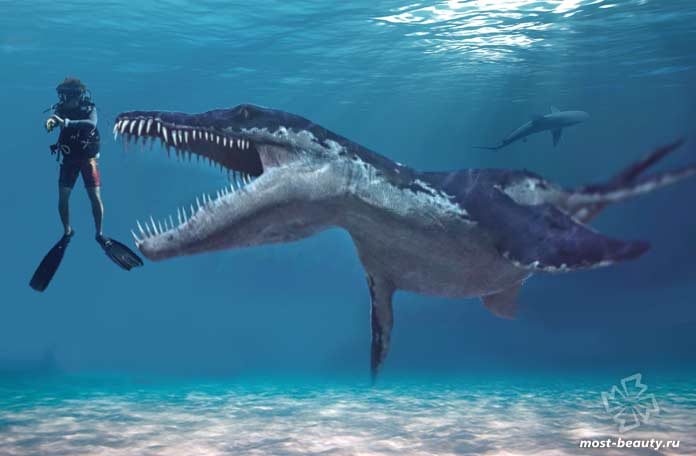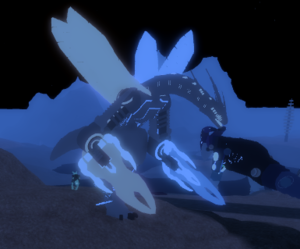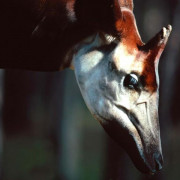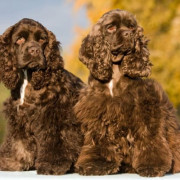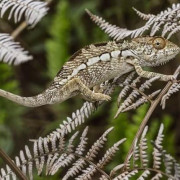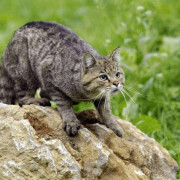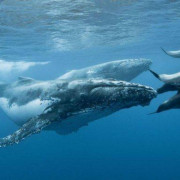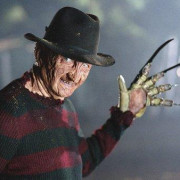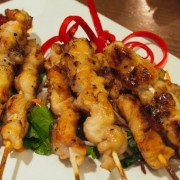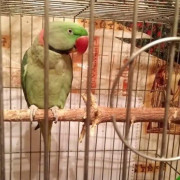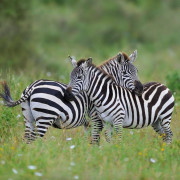Целофиз
Содержание:
- GalleryEdit
- FactsEdit
- FactsEdit
- Behind the scenesEdit
- CaracterísticasEditar
- Notes/Trivia
- Carnivores: Dinosaur Hunter
- Description Edit
- Synopsis
- Classification Edit
- DescubrimientoEditar
- In Walking with Dinosaurs: A Natural HistoryEdit
- In When Dinosaurs Roamed AmericaEdit
- ReferencesEdit
- History of discoveryEdit
- Base Stats, Controls, and Abilities
GalleryEdit
|
|
||
|---|---|---|
|
FactsEdit
It lived in North America during the Late Triassic period (around 230 MYA). It was also among the first of the dinosaurs ever to appear on Earth.
Coelophysis and other early dinosaurs were light boned, fast, and they are beautifully adapted for killing. But what made them unique are special hips and ankles that allowed them to stand perfectly balanced on two hind legs. They also could make noise without using much precious water. With lightning fast reactions, they were built to survive. This was unlike other sauropsids at the time, and a unique trait of the averesmentalians.
It was their speed and agility that gave them the edge in the Triassic. When their numbers are on the increase, this leads to confrontations. They were opportunistic feeders and would eat anything that moves.
Coelophysis was built to be a slender, agile reptile with a long neck and tail, perfect for searching scorpions, lizards and other small animals that may be hiding under rocks, in holes, or on trees. However, by the time the Jurassic period arrived, new theropods appeared on the scene, like Dilophosaurus. They were bigger and stronger than Coelophysis and better adapted to fill-in the carnivores’ eco-niche — and so they drove Coelophysis to extinction.
FactsEdit
Coelophysis were small theropods. They hunted small animals including insects and small vertebrates like cynodonts and primitive mammals. They were also scavengers, feeding on the corpses of dead animals. They were slenderly-built, meaning that they were streamlined and agile animals. Coelophysis was one of the fastest animals in their ecosystem, able to easily outrun other, larger predators like Rutiodon.
Despite living on Earth earlier than birds, Coelophysis had several similarities to them. Coelophysis possessed hollow bones, lowering its weight to about 20 kg (44.1 lbs). The rest of its body is built like birds. Coelophysis had a furcula (wishbone). However, there are differences. Coelophysis’ tail was built like a rudder used to counterweight the rest of its body’s weight. Its arms are equipped with hands designed to grasp items as opposed to the hands of birds.
Behind the scenesEdit
There is no evidence that Coelophysis was a cannibal. The bones found in the famous specimen’s stomach are now believed to that of a small species of crocodilian. (However, it could have been one, as they have found evidence of dinosaur cannibalism)
The model of Coelophysis was retextured and its vocalizations were reused for the Triassic coelurosaur.
Coelophysis probably didn’t feed on live and healthy Placerias on their own.
Coelophysis had sexual dimorphism, unlike the ones in the show, which were all the same.
No theropod had pronated wrists.
Coelophysis didn’t live at the same time as Placerias. However, they were both from the Ghost Ranch Formation.
Coelophysis didn’t coexist with Plateosaurus, who lived in Europe, not North America. It also did not live at the same time as Coelophysis.
Coelophysis didn’t live 220,000,000 BCE. It evolved at least 203,000,000 BCE and lived to at least into the Early Jurassic approximately 196,000,000 BCE or possibly even later.
List of appearancesEdit
-
Walking with Dinosaurs
«New Blood»
-
Walking with Dinosaurs: A Natural History
«New Blood»
- Walking With Dinosaurs: The Official Sticker Album
- Giant Walking with Dinosaurs Special
- The Complete Guide to Prehistoric Life
CaracterísticasEditar
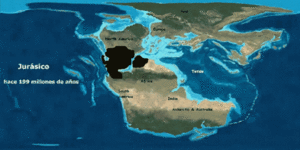
Paleodistribución del Coelophysis.
Eran unos cazadores muy versátiles, podían cazar animales como el Placerias atacando en manada atacando velozmente con la boca y aferrándose con las garras a la presa. Cuando atacaban en manada, se llevaban a las crías con ellas para que no fueran devoradas por los depredadores. También podían pescar peces y anfibios pequeños con sus alargadas mandíbulas y sus dientes parecido a arpones que si se caían, volvían a crecer. Los restos hallados muestran que las crías tenían, en proporción a los adultos, unas cabeza mayores, esta diferencia iba desapareciendo con el tiempo. Se cree que formaban pequeños grupos de hembras y crías y que los machos vivían a solas o en pequeños grupos. Esto se demuestra gracias a que en el lugar del descubrimiento se han hallado crías junto a las madres, y algo aún más sorprendente, eran caníbales. Se cree que tenía plumas en partes del cuerpo como el cuello o los brazos, aunque es poco probable.
Notes/Trivia
- Coelophysis means «Hollow Form».
- Coelophysis is one of the most well known and studied theropods of the Late Triassic, being known from hundreds of specimens across North America. Coelophysis lived close to the end of the Triassic, around 200 million years ago.
- The Coelophysis in the mod are sexually dimorphic. The females tend to be green in coloration, while the males don’t really have any favoritism in terms of coloration.
- The Coelophysis was originally intended to be much smaller than it is now, but the animal is so lithe that at a small size it would be impractical to ride. The current size ingame is the smallest ridable size manageable.
Carnivores: Dinosaur Hunter
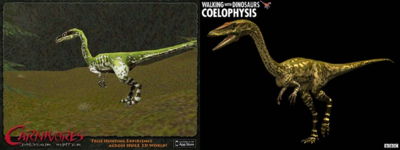
Coelophysis from Carnivores compared to Coelophysis from Walking with Dinosaurs. Note the similar model and coloration.
Carnivores Dinosaur Hunter Coelophysis walk animation
Coelophysis‘ walk animation, from Tatem Games’ official Youtube channel.
Like Utahraptor, Carnotaurus, Indricotherium, Hyaenodon, and Iguanodon, and others, Coelophysis was announced on the official Facebook page on Febuary 26, 2014 by Tatem Games; they stated that they were adding a new dinosaur in addition to Iguanodon. The Coelophysis was released in April 18, 2014 as well as the Iguanodon. Its color scheme strongly resembles that of the Coelophysis from BBC’s Walking with Dinosaurs.
Coelophysis is a pack hunter, and appears on the map as several dots mingling together. When the hunter approaches, they swarm towards him. Having relatively weak health, one may manage to hold his ground and take them out, but it is recommended to either attain higher ground or retreat, as Coelophysis do not «swerve» as most dinosaurs do, they simply charge right towards you, as a group. Coelophysis also have the distinction of being very noisy and loud; allowing the hunter to hear them a great distance away. Even though the coelophysisis a pack hunter occasionaly one will spawn on it’s own.
When hunting on a map full of Coelophysis, it is noted that if the hunter shoots a loud weapon, causing the pack to run a short distance and then send the majority of individuals back to attack, and then the hunter relocates away, the dinosaurs will hunt down the player even on the other side of the map. Thus, with repeated relocating, a player can mass a swarm of over 30 Coelophysis to one spot. Coelophysis will flee and come back.
Pack Mechanics
A pack of Coelophysis roam freely in Carnivores: Dinosaur Hunter
With the Coelophysis being the first pack dinosaur, it’s AI is different from other dinosaurs.
When a hunter locates a pack and fires a weapon at, or anywhere, the dinosaurs closest to him/her will run towards the player. By aiming at the side of the animal; a few 1 hit will bring down each animal.
The dinosaurs that aren’t in «attack mode range» will flee and regroup elsewhere. If none of the pack is in the attack range, the entire pack will move a short distance away. Then, no matter where the hunter is, on one side of the map or the other, several individuals from that pack will hunt the hunter down until killed, or they kill the player.
This means that by taking select individuals from each pack, a careful hunter can amass a gigantic swarm, gun them down safely and take a picture for the record books.
Description Edit
Size comparison of Coelophysis bauri (purple), and a human.
Coelophysis was very slim and it probably would have been a fast runner. Despite being an early dinosaur, the evolution of the theropod body form had already advanced greatly from creatures like Herrerasaurus and Eoraptor. The torso of Coelophysis conforms to the basic theropod body shape, but the pectoral girdle displays some interesting special characteristics: C. bauri had a furcula (wishbone), the earliest known example in a dinosaur. Coelophysis also preserves the ancestral condition of possessing four digits on the hand (manus). It had only three functional digits, the fourth embedded in the flesh of the hand.
Profile of Coelophysis bauri.
Synopsis
Coelophysis is a small, raptor-sized dinosaur running in large groups throughout various ARK habitats. The definition of «Mob mentality», they are known for grouping up into the largest social hunting mobs of any creature on the ark network. Alone, Coelophysis is barely any better than a raptor. But with their tight social networking and bonds, Coelophysis becomes terrifying at maximum potential! In a massive, lightning-fast horde, they can rip even the largest prey to pieces. However, this comes at a cost: coelophysis is extremely fragile, granted its body build. Despite its size, it is about as durable as the common dilophosaurus. Even in their massive packs, they aren’t a good replacement for heavy-hitting late game mounts or even standard pack fighters. Instead, mobs of coelophysis serve the purpose of a rush-down mob of glass canons. This makes them excellent for softening up an enemy and leaving heavier-hitting allies to finish the job, or vice versa: sending in a mob of coelophysis to finish off the weak remaning foes. Tamed, they make great mounts for scouting and group ventures, although do remember of their fraility: and it’s only in their massive mobs they truly shine as a group!
Classification Edit
Coelophysis skeletal diagram
Coelophysis is a distinct taxonomic unit (genus), composed of a single species, C. bauri. Two additional species were originally described in addition to C. bauri, C. longicollis, and C. willistoni; however, they are not diagnostic and are considered synonymous with C. bauri. C. rhodesiensis is probably part of this generic complex, and is known from the Jurassic of southern Africa (see below for more). In phylogenetic taxonomy, Coelophysis is treated as a clade within the Coelophysidae.
In the early 1990s, there was debate over the diagnostic characteristics of the first specimens collected, compared to the material excavated at the Ghost Ranch Coelophysis quarry. Some paleontologists were of the opinion that the original specimens were not diagnostic beyond themselves and, therefore, that the name C. bauri could not be applied to any additional specimens. They therefore applied a different name, Rioarribasaurus, to the Ghost Ranch quarry specimens.
Sullivan & Lucas () referred one specimen from Cope’s original material of Coelophysis (AMNH 2706) to what they thought was a newly discovered theropod, Eucoelophysis. However, subsequent studies have shown that Eucoelophysis was misidentified, and is actually a primitive, non-dinosaurian ornithodiran closely related to Silesaurus.
Coelophysis is also the state fossil of New Mexico.
DescubrimientoEditar
Los primeros restos de Coelophysis fueron descubiertos por David Baldwin, un coleccionista de fósiles aficionado que primero trabajó para Othniel C. Marsh y después para Edward D. Cope. Baldwin prefería trabajar sólo que en grupo. Recogía sus fósiles en Nuevo México, donde se encuentran yacimientos del Pérmico y el Triásico. En un yacimiento del Triásico cerca de Abiquiu, al noreste de Nuevo México, Baldwin descubrió en 1881 algunos fragmentos óseos de dinosaurios primitivos que envió a Cope, en Filadelfia. Éste los reconoció de inmediato como pertenecientes a un dinosaurio pequeño y de estructura muy ligera. De hecho, afirmo que pertenecían a tres especies: Coelophysis bauri, Coelophysis willistoni (así llamados en honor de los asistentes de Othniel C. Marsh George baur y Samuel willinston) y Coelophysis longicollis. Estos restos estaban bastante incompletos y comprendían varias vértebras, huesos de la pata y fragmentos de la pelvis y las costillas. En 1947 una expedición organizada por el Museo Norteamericano de Historia Natural visitó la región explorada hace tiempo por Baldwin. Basándose en los apuntes tomados por él, pudieron descubrir la localización exacta del fósil original, cerca de Ghost Ranch. El equipo exploró la zona y halló varios huesos, pero ningún esqueleto completo, hasta que decidieron excavar en una amplia zona de la ladera de una colina donde parecían emerger unos huesos. Tras excavar, se revelaron docenas de esqueletos aplastados y clavados unos en otros por culpa de una inundación súbita que arrastró sus cuerpos río abajo hasta un banco de arena en el litoral. En esta notable acumulación de huesos hay animales de todas las edades, desde crías hasta adultos. Por ello sabemos que Cope se equivocó designando tres especies de Coelophysis, lo que pasó fue que cada supuesta especie era una etapa de crecimiento del animal.
In Walking with Dinosaurs: A Natural HistoryEdit
Edit
A male Coelophysis first appeared stalking a lungfish which was finishing off a crayfish. After careful observation, the Coelophysis struck the lungfish and threw it out the water. The dinosaur then pinned the lungfish down and dismembered it. Within five minutes, he finished his meal and then headed off to find shade.
Later, two Coelophysis discovered a burrow containing two Thrinaxodon. The larger of the two peered into the burrow but was alarmed when a male Thrinaxodon emerged. The Coelophysis barked as he tumbled down the bank away from the angry parent. Knowing the Thrinaxodon is too big a meal, the Coelophysis trotted away and stopped at 50 meters to watch. The male Thrinaxodon then returned to his agitated family. The Coelophysis then left.
During the night, as the Thrinaxodon parents left to hunt, the Coelophysis attacked and killed a pup that clambered out of its burrow after its father. The father heard his pup’s squeals of pain and returned to the burrow but he was too late. The Coelophysis then accelerated away down the riverbank.
In the morning, the Thrinaxodon burrow was under siege by several Coelophysis. The male Thrinaxodon returned to flush out the attackers but his attempts were futile. As he left, the Coelophysis began to dig up the burrow. Despite several attempts to chase away the dinosaurs during the night, the Coelophysis kept on reappearing. In the morning, as the Thrinaxodon pair sought refuge, the Coelophysis were surprised by their exit. One large female attempted to pursue the pair but the male Thrinaxodon attacked her. The rest of the Coelophysis continued to dig at the burrow again.
During the height of the dry season, the forest around the river was slowly filling with Coelophysis and as a result, they became pack hunters. One finds a dying Postosuchus. He was then joined by 40 to 50 other Coelophysis who then surrounded the Postosuchus. The Postosuchus lunged at a female Coelophysis and managed to catch its foot. It then pinned the Coelophysis with its front claws and severed her neck. As the Postosuchus attempted to protect its shoulders, the rest of the Coelophysis dragged away the dead female and then devoured her. As the Postosuchus’ movements became less and less frequent, the Coelophysis climbed on top of it and feasted on its corpse from the inside out.
A lone Coelophysis was later seen overlooking a whip scorpion who was laying her eggs. The Coelophysis then attacked her but she pulled back into a Placerias skull. The Coelophysis got too close and the scorpion sprayed a cloud of acid onto his face. The Coelophysis fell back, scratching at his nostrils which were burning as a result of the acid. The Coelophysis persisted in attacking again and was rewarded with another spray of acid. Irritated and in pain, the Coelophysis once again attacked the whip scorpion and ate her. Its efforts were hardly worth it.
Despite the drought, Coelophysis numbers were still high. A small flock tracked down an old riverbed and spread out to hunt. Two Coelophysis bickered over a dismembered centipede, one immature Coelophysis hid under a cycad. Several adult Coelophysis chased the youngster. The leader of the flock flung the youngster into the air by its tail. As he landed, the youngster tried to regain his footing but the jaws of his elder closed swiftly on his neck. When the young Coelophysis gone limp, the second adult immediately tried to snap and tug at the body. The killer then had to run to the scrub to avoid losing his prey to the rest of the flock. Several other Coelophysis pursued him.
As the start of the wet season began, hundreds of Coelophysis were swept away by a wall of silt and water. Very few Coelophysis managed to escape. The victims were buried under tonnes of silt in the lowland swamps along with several phytosaurs.
During a night for hunting, the male Thrinaxodon found and killed a young Coelophysis. A group of several Coelophysis was later seen fleeing across the riverbank as a fully grown female Plateosaurus blundered out of the undergrowth.
In When Dinosaurs Roamed AmericaEdit
A Rutiodon narrowly missing the Coelophysis.
In the late Triassic segmentCoelophysissmall mammalCoelophysisCoelophysisRutiodonCoelophysisRutiodonCoelophysis
Later, the Coelophysis is seen at the top of the local waterfall drinking from it. When it finishes, it hops across the water’s surface on some rocks and once again returns to the forest. Shortly after, it finds an Icarosaurus on top of a fallen tree. The Coelophysis leaps at it but the Icarosaurus glides away using its elongated ribs. The Coelophysis fails to catch it and leaves the scene.
After running through the forest, the Coelophysis comes across a deep burrow. It checks it out but then, a Traversodon emerges from the burrow and scares off the Coelophysis. Later, after a confrontation between a Rutiodon and a Desmatosuchus, the Coelophysis appears and approaches the Desmatosuchus. The Coelophysis mocks a lunge at the Desmatosuchus but the target did not tolerate the Coelophysis presence. It aggressively swipes its armour-plated tail at the Coelophysis but it misses. The Coelophysis runs away shortly after.
The Coelophysis chasing a locust.
Later, in the forest, the Coelophysis finds a large Locust resting on a tree and attacks it. As the insect flies away, the Coelophysis quickly follows. The Coelophysis chases it throughout the forest until the locust temporarily rests and flies off again. The Coelophysis manages to catch it mid-flight and eat it. It then runs off again to the river where a Rutiodon is basking on the bank before it re-enters the water. The Coelophysis then leaves the area.
ReferencesEdit
- ^ Gaines, Richard M. (2001). Coelophysis. ABDO Publishing Company. pp. 4. ISBN 1-57765-488-9.
- Gay, Robert J. 2001. «An unusual adaptation in the caudal vertebrae of Coelophysis bauri (Dinosauria: Theropoda).» PaleoBios 21: supplement to number 2. Page 55.
- Dr. Michael Benton, Dinosaur and other prehistoric animal Fact Finder, 1992.
- Paul, Gregory S. (1988). Predatory Dinosaurs of the World. Simon & Schuster. p. 260. ISBN 0-671-61946-2.
- Gay, Robert J. 2002. «The myth of cannibalism in Coelophysis bauri.» Journal of Vertebrate Paleontology 22(3); 57A
- Nesbitt, S.J., Turner, A.H., Erickson, G.M., and Norell, M.A. (2006). «Prey choice and cannibalistic behaviour in the theropod Coelophysis.» Biology Letters, First Cite Early Online Publishing doi:10.1098/rsbl.2006.0524.
- Rinehart, L., Hunt, A., Lucas, S., Heckert, A., and Smith, J. (2005). «New evidence of cannibalism in the Late Triassic (Apachean) dinosaur, Coelophysis bauri (Theropoda: Ceratosauria).» Journal of Vertebrate Paleontology, 25(105A).
- ^ Colbert, Edwin. (1989) «The Triassic Dinosaur Coelophysis«. Museum of Northern Arizona Bulletin.
- Colbert, Edwin. 1990. in Dinosaur Systematics.
- ^ Paul GS. (1988) Predatory Dinosaurs of the World
- Gay, R. 2005. Sexual Dimorphism in the Early Jurassic Theropod Dinosaur Dilophosaurus and a Comparison with Other Related Forms; pp. 277-283 in K. Carpenter (ed.), The Carnivorous Dinosaurs. Indiana University Press, Bloomington, IN.
- Cope ED.(1889) «On a new genus of Triassic Dinosauria». American Naturalist xxiii p. 626
- Colbert, Edwin H. (1965). The Age of Reptiles. W. W. Norton & Company. p. 97. ISBN 0-486-29377-7.
- Hunt, A.P. and Lucas, S.G., (1991). «Rioarribasaurus, a new name for a Late Triassic dinosaur from New Mexico (USA). Paläontologische Zeitschrift 65 (1/2), 191-198.
- Colbert, E. H., Charig, A.J., Dodson, P., Gillette, D. D., Ostrom, J.H. & Weishampel, D.B. (1992). Coelurus bauri Cope, 1887 (currently Coelophysis bauri; Reptilia, Saurischia): Proposed replacement of the lectotype by a neotype. Bulletin of Zoological Nomenclature 49 (4), pp. 276-279.
- International Commission on Zoological Nomenclature, 1996. Opinion 1842: Coelurus bauri Cope, 1887 (currently Coelophysis bauri; Reptilia, Saurischia): lectotype replaced by a neotype. Bulletin of Zoological Nomenclature. 53 (2), 142-144.
- Sullivan, R.M. & Lucas, S.G., 1999. «Eucoelophysis baldwini, a new theropod dinosaur from the Upper Triassic of New Mexico, and the status of the original types of Coelophysis«. Journal of Vertebrate Paleontology 19(1): 81-90
- Nesbitt, Sterling J.; Irmis, Randall B.; and Parker, William G. (2007). «A critical re-evaluation of the Late Triassic dinosaur taxa of North America». Journal of Systematic Palaeontology 5 (2): 209-243.
- Downs, Alex. 2000. in «Dinosaurs of New Mexico,» New Mexico Museum of Natural History Bulletin.
- Paul GS. (1993) in New Mexico Museum of Natural History Bulletin.
- Talbot M (1911). «Podokesaurus holyokensis, a new dinosaur from the Triassic of the Connecticut Valley.» Amer. Jour. Sci. 4 469-479
History of discoveryEdit
Coelophysis mount in the Natural History Museum, London.
Edward Drinker Cope first named Coelophysis in 1889 during his competition to name species with Othniel Charles Marsh, known as the «Bone Wars». An amateur fossil collector, David Baldwin, had found the first remains of the dinosaur in 1881. The type species, C. bauri was named for Baur, one of the many fossil collectors who supplied Cope. However, these first finds were too poorly preserved to give a complete picture of this new dinosaur.
Coelophysis skeleton, Cleveland Museum of Natural History
Since the Ghost Ranch specimens were discovered, more skeletons have been found in Arizona, New Mexico and an as-yet unconfirmed specimen from Utah, including both adults and juveniles, the deposits where Coelophysis has been discovered date from the late Carnian to the early Norian faunal stages of the Triassic Period.
Edwin H. Colbert has suggested that Connecticut Valley theropod footprints referred to the ichnogenus Grallator may have been made by Coelophysis.
Base Stats, Controls, and Abilities
| Attribute | Base Stat |
|---|---|
| Health | 185 |
| Stamina | 400 |
| Oxygen | 150 |
| Food | 1380 |
| Weight | 180 |
| Melee Damage | 162% |
| Movement Speed | 100% |
| Torpidity | 400 |
Left Click — Bite
15 Base Damage — Gathers Silica Pearls
Right Click — Preen
Heals 20 Health and Removes Any Parasites — Cannot Be Used While Moving
C — Roar
X — Groom
Heals 20 Health and Removes Any Parasites Off Allies — Cannot Be Used While Moving
Spacebar — Jump
Coelophysis have a pack bonus, with the highest level individual becoming the leader. This pack bonus maxes out at 21 individuals.
Taming coelophysis is a complex process. In order to tame a coelophysis, the player needs to feed it as it attacks them. The Coelophysis will then pause for around 20 seconds, giving time for the player to get to a safe place. The Coelophysis at some point will calm, either immediately or after an initial tantrum. Once its wandering, and the player sees an odd buff appear in the their UI, the player can approach it without worry of attack, and can feed it like any other passive tame.
